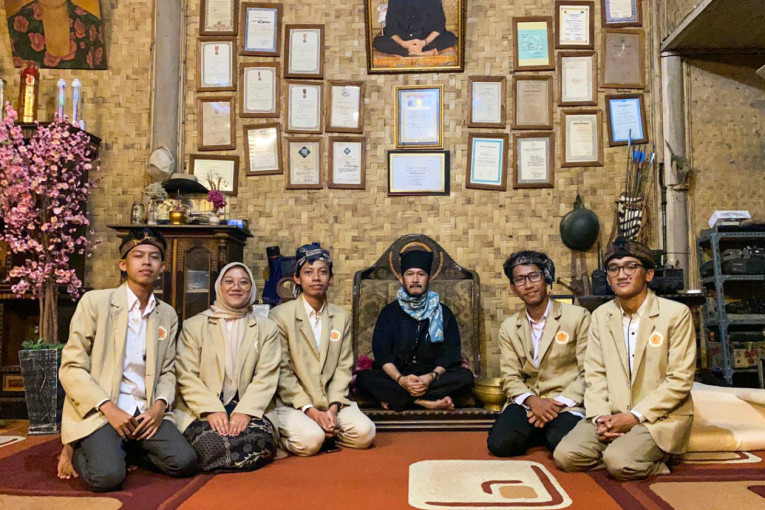
A group of UGM students from the Student Creativity Program in Social Sciences and Humanities Research (PKM-RSH) conducted a study in Ciptagelar, Sukabumi, West Java, from June 23 to 30.
The team consisted of Nanda Ishaqi (Philosophy), Rahardhian Putra Pramana (Government Politics), Ahmad Nilmadza Azmi (Philosophy), Noor Faiz Rasyid (Physics), and Fanisa Ratna Dewi (Philosophy), receiving supervision from Faculty of Philosophy lecturer Dr. Abdul Rokhmat Sairah.
This research was based on the view that Indigenous communities are often perceived as conservative societies that live in isolation and see modernity as a threat to their cultural values.
However, the opposite was found in the Ciptagelar community in Sukabumi, West Java. It is open to modern technology and even uses various technological devices to continue its traditions.
“The ability of the Ciptagelar community to integrate modern technology into their daily routines without neglecting traditional values demonstrates a dynamic between traditional values and modernity,” said team leader Nanda Ishaqi.
He explained that the uniqueness of the Ciptagelar community lies in its method of spreading cultural values through television, through its local TV station, CIGA TV.
All traditional activities are recorded on video and broadcast via CIGA TV to pass down traditions to future generations. Another exciting aspect is the Wi-Fi internet access covering a 30 km radius in Ciptagelar.
“Information technology like CIGA TV conveys cultural values and traditions because the Ciptagelar Indigenous community does not use writing to transmit values and traditions. They independently manage Wi-Fi and the local TV channel CIGA TV to benefit the Indigenous community,” added Ahmad Azmi.
Through their research, the team found that the responsiveness of this cultural structure can also be seen in the history of Ciptagelar. The Sirnarasa era in 1980 marked a period when the community began to open up to technological advancements to spread traditional customs.
“The first technology was electric dynamo technology in 1988, followed by the introduction of micro-hydro power technology with foreign assistance in 2000, and subsequently FM radio, local television stations, and Wi-Fi,” explained Noor Faiz Rasyid.
The team also explored the beliefs or principles of the Indigenous community, one of which is the concept of “hirup salaras and salurus.” Salaras means living in harmony with nature and the times, and salurus means living according to the commands of the ancestors.
A local motto also says the community should live by the times but not be swept away by modern developments.
According to the students, these ideas are the foundation for harmonizing traditional values with modernity, which is directly reflected in the application of modern technology, such as local television stations and internet networks, in the lives of the Ciptagelar Indigenous community.
Author: Gloria

